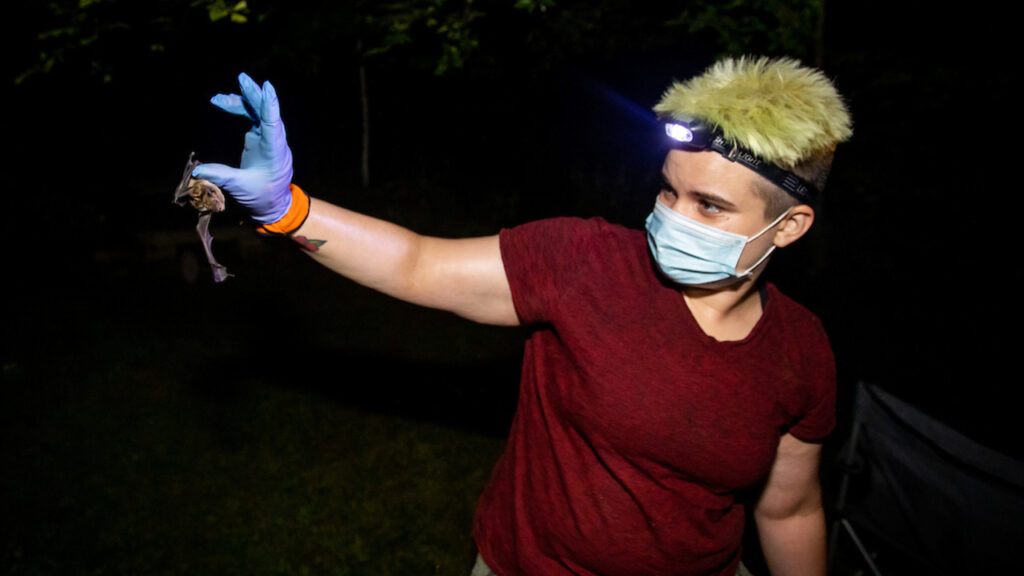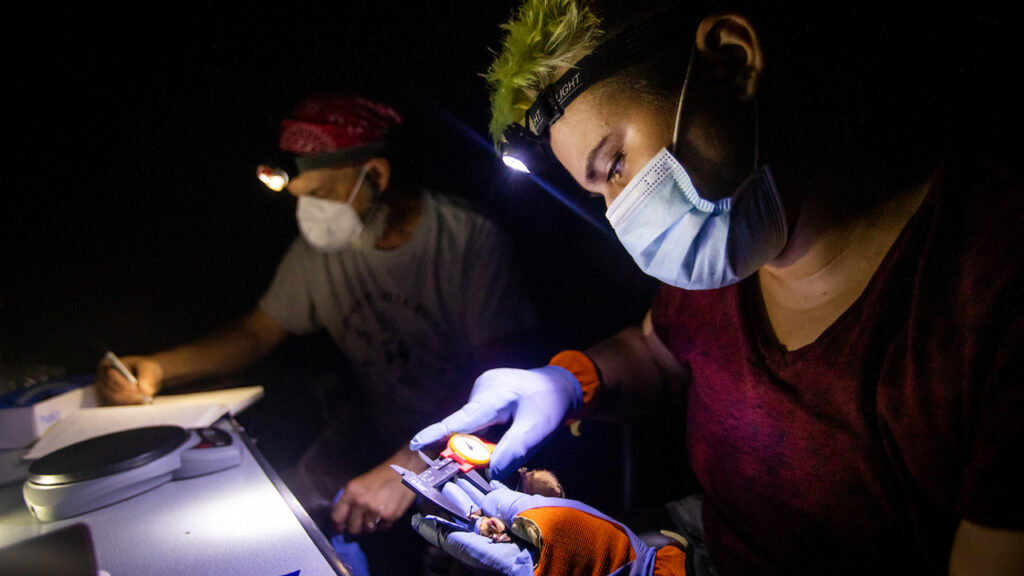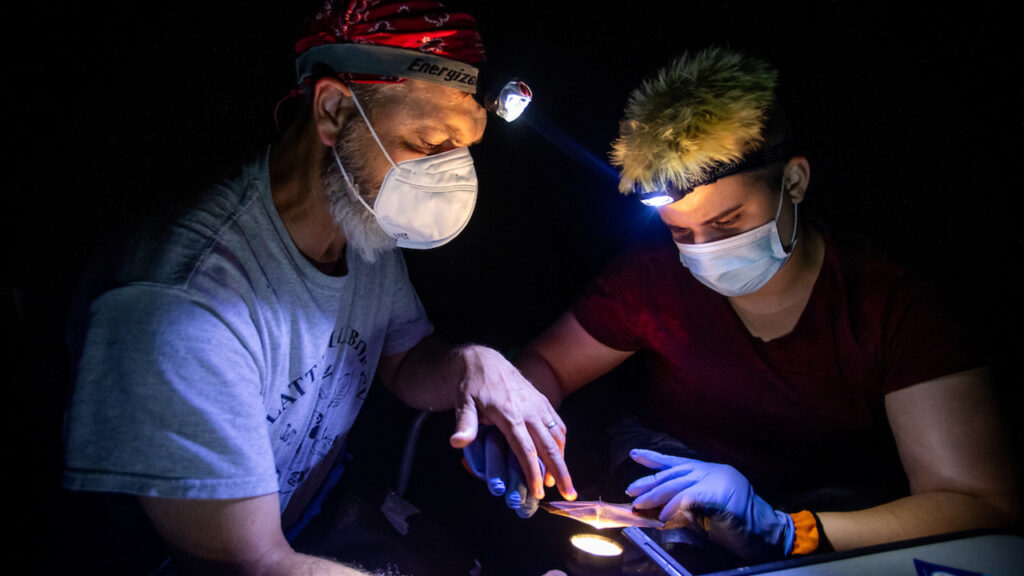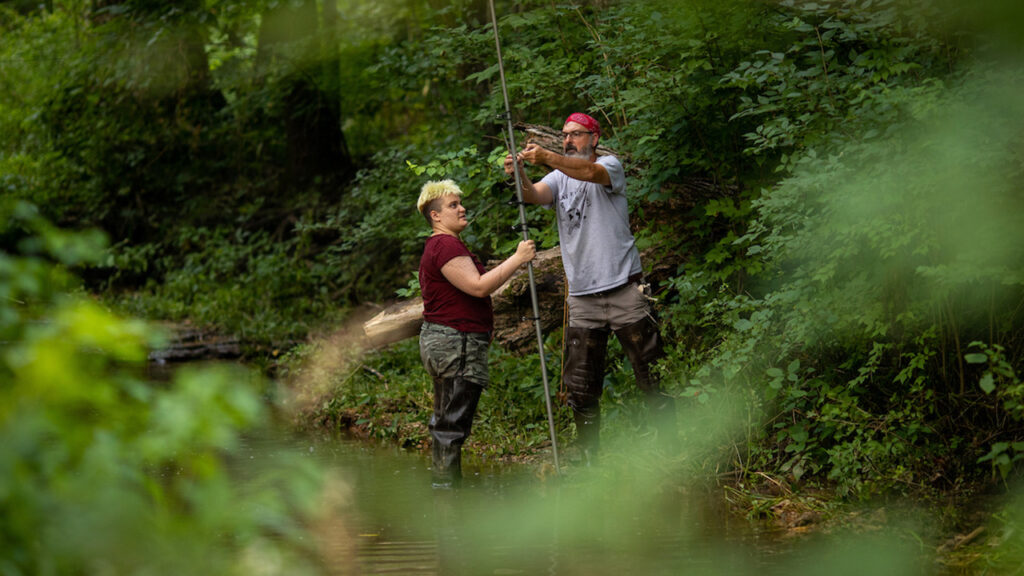One University of Wisconsin-Platteville student spent her summer learning about bats and researching whether the species of bat Nycticeius humeralis, commonly referred to as the evening bat—which has historically stayed south of Wisconsin—may now be found in the Platteville area.
Kirsten Magedanz’s research, titled “A New Horizon for the Evening Bat?” will be showcased at the 19th annual Research in the Rotunda, held on Wednesday, March 8 in the state Capitol. Magedanz will present her findings to legislators, state leaders and peers from across the UW System.
“I was excited to learn about bats in detail, because they’re so unique and specialized and so important. Our only flying mammals, nothing else on Earth has webbed wings of skin on great big hands and full-powered flight, not to mention how fascinating their sonar is, and I just think their big ears and weird little faces are so cute,” said Magedanz, a senior biology major from New Berlin, Wisconsin. “A lot of people also don’t realize how important they are, and there’s a lot of harmful misinformation about bats still in popular culture.”
In 2015, the first record of the evening bat in Wisconsin was documented in Rock County, on the Wisconsin/Illinois border. Acoustic equipment has picked up calls that may have come from the evening bat on the UW-Platteville campus, but the presence of the species could not be confirmed. Magedanz’s ultimate goal, in her research, was to see if she could get Nycticeius humeralis in hand to prove their presence. Either way, she said her survey findings will still provide valuable information on shifting population dynamics, due to the years Dr. Jeff Huebschman, Magedanz’s advisor and mentor for this project, has been conducting net surveys at these sites.
Magedanz and Huebschman began netting bats in June at five sites, approximately once a week. The pair set up a net before sunset, recorded site conditions in field journals and kept a record of all bats caught. They checked the net every five minutes, and if there was a bat, they would retrieve it for examination and record the species, age, reproductive condition, weight and forearm length before releasing the bat. They also put out audio recorders to pick up bat sonar calls, which are unique to species. The calls are matched against a database of model calls in order to give a probability of the call belonging to a certain species. Magedanz also had the opportunity to work with someone at the Wisconsin Department of Natural Resources on official bat surveys at protected sites.
Magedanz said that having bats in hand, actually seeing them up close, watching them fly and hearing their vocalizations was really incredible, as was the experience of sitting outside, late at night and seeing stars and hearing nocturnal animals.
Ultimately, Magedanz and Huebschman did not catch an evening bat, but findings compared to previous years painted an interesting picture. Wisconsin has seven local species, all of which could be found in Grant County in surveys taken before white-nose syndrome, a disease which has rapidly wiped out entire populations of bats and caused some species to become endangered. Magedanz and Huebschman only caught three species – big brown bats, little brown bats and eastern red bats. Out of 52 total bats caught, almost all were big brown bats, while only a few were little brown bats and eastern red bats. They saw limited acoustic evidence of the other four species and captured none of them. Little brown bats made up less than 10% of the bats caught at their sites through June and July. In previous years, Huebschman’s records showed little brown bats exceeded half of all bats caught in nets at these same sites, but their numbers have dropped massively after white-nose syndrome. After 2014, the northern long-eared bat and the tri-colored bat have practically disappeared from surveys in the area, and this was reflected in the acoustic data as well.
“I really developed a love for fieldwork and bats over this project and also an understanding and respect for the work involved,” said Magedanz, who had intended to enter the workforce after completing her bachelor’s degree but is now hoping to earn a master’s degree and possibly a doctorate in order to pursue a career she’s passionate about.
To learn more about Research in the Rotunda, visit wisconsin.edu/research-in-the-rotunda/.
Written by Kristie Reynolds
Link to original story: https://www.uwplatt.edu/news/uw-platteville-student-present-research-evening-bat




